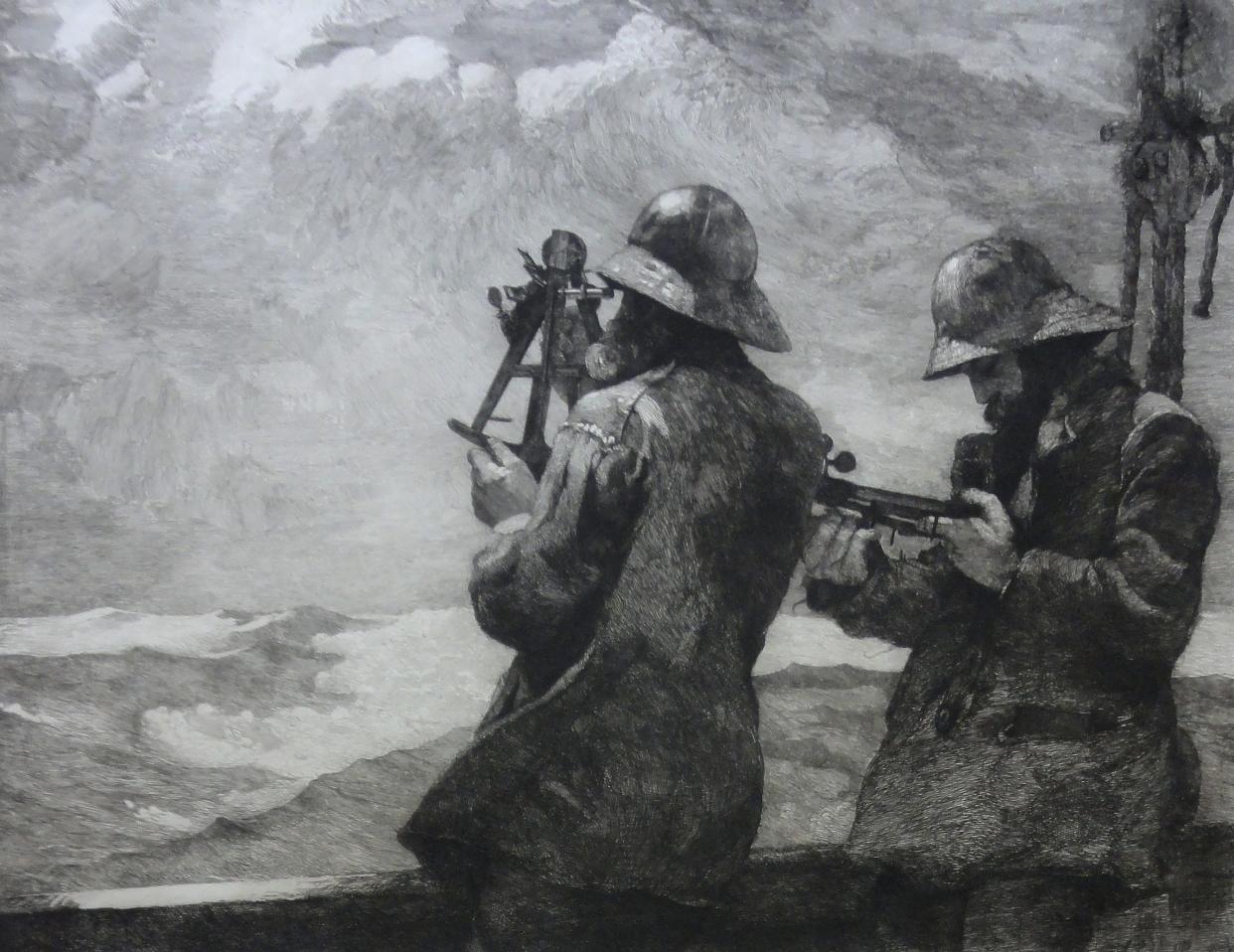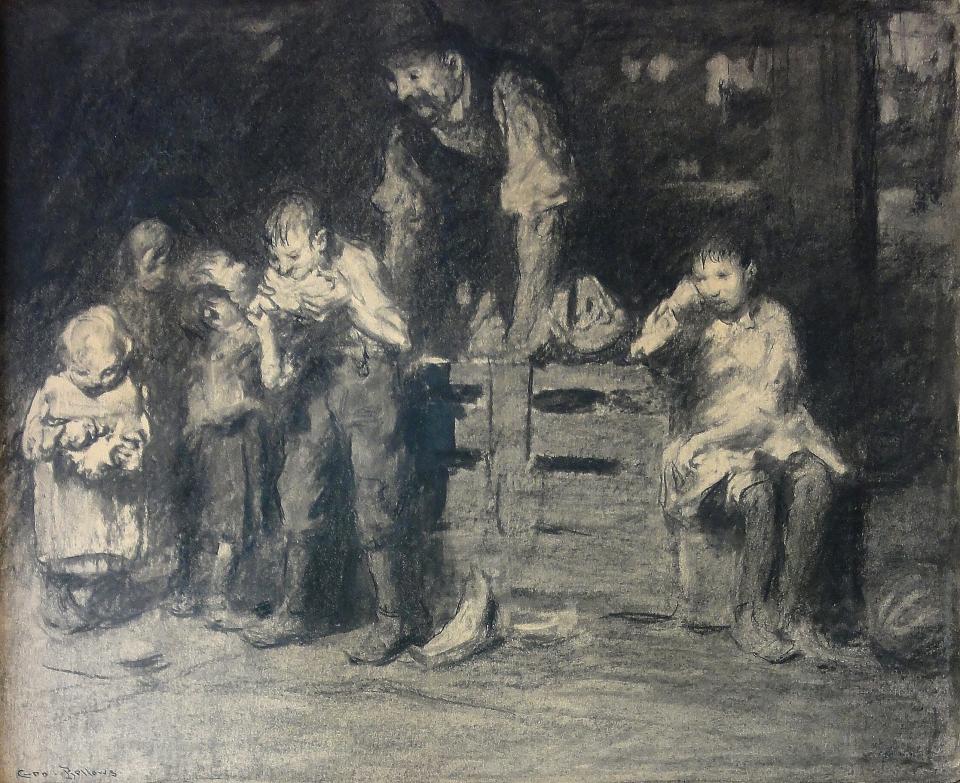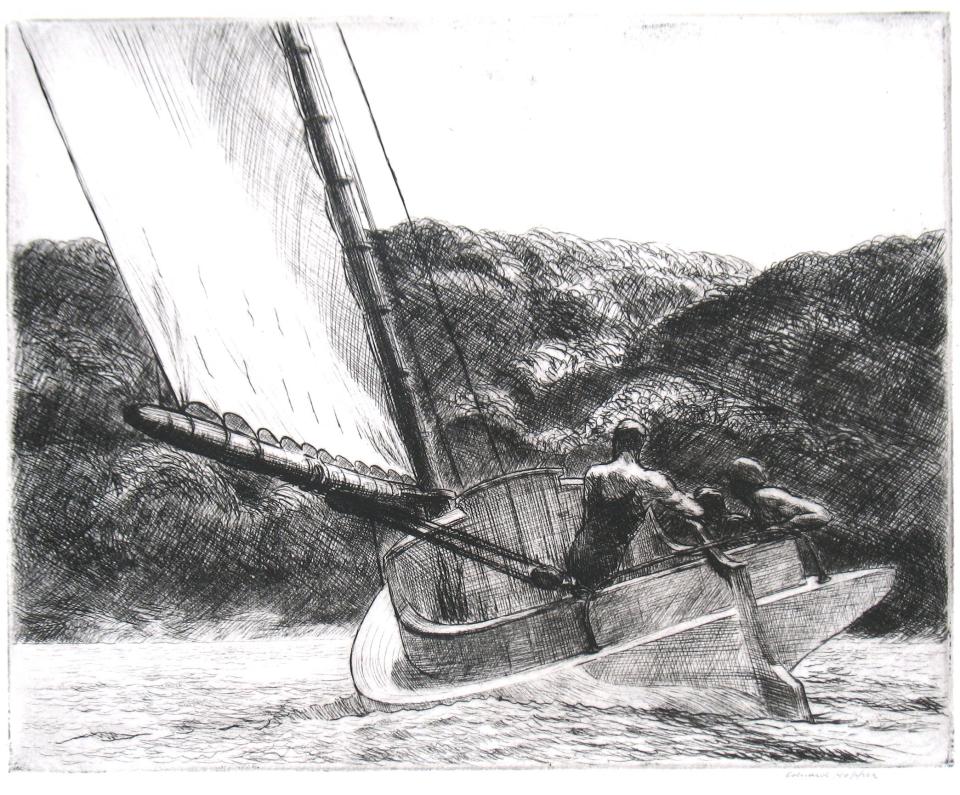Visual arts: George Bellows, Winslow Homer and Edward Hopper captured everyday life

- Oops!Something went wrong.Please try again later.
- Oops!Something went wrong.Please try again later.
- Oops!Something went wrong.Please try again later.
Three master artists — Winslow Homer, Edward Hopper and Columbus native George Bellows — captured working-class life in late 19th- and early 20th-century America. In paintings, drawings and prints, they depicted subway riders, sailors, shipwreck victims, farm girls, boxers, billiards players and many more.
These sorts of everyday snapshots are presented in 30 lithographs, etchings and drawings on view through May 26 in the exhibit “Three American Masters” in German Village’s Keny Galleries. The beautiful works, as gallery co-owner Tim Keny said, take a look at “American life on the other side of the tracks” from 1884 to 1923.
“All three artists were very much interested in life as lived by the everyday person,” Keny said. “Bellows would go and be with the (wealthy Gilded Age) Vanderbilts and then go spend time at a pool hall.”
Homer lived by the sea and was familiar with fishing and shipping, probably more comfortable there than in the established art world. And Hopper frequented gas stations, motels, parks and urban cafes, the last famously captured in his painting “Nighthawks.”
The works on view in the gallery — many of which refer to earlier paintings by the artists — show “the democracy of America,” Keny said.
George Bellows
Bellows, who was born in 1882 in Columbus and died in 1925 in New York City, has the most prints and drawings in this exhibit. The first work to greet visitors entering the gallery is the beautiful “Watermelon Man” (1906), a drawing of a group of children clustered around and clamoring for a treat from the picture’s title character.
Nellie Mae Rowe: Visual arts: Neglected folk artist Nellie Mae Rowe displayed 'explosion of creativity'
In contrast is the dark and violent drawing “Dog Fight” (1906-07), a grim scene of two dogs snarling and squaring off before a crowd of men.

Bellows’ familiar boxing scenes are present in the lithographs “A Knockout” (1921) and “A Stag at Sharkey’s” (1917) in which the artist put his own bald-headed self at ringside, a nice reminder of Bellows’ sense of humor.
Winslow Homer
One room in the gallery presents Homer’s sea-themed etchings. Particularly arresting is “The Life Line” (1884-87), depicting a rescue from a shipwreck off the coast of England. A woman who looks to be unconscious is held by a man whose face is unseen, with both supported by a line that hangs across the roiling sea. The etching is hung close to another Homer etching showing the same scene, “Saved” (1889).
Franklin Park Conservatory: Visual arts: Exhibit at Franklin Park Conservatory uses items from nature -- naturally
The nautical theme continues with Homer’s “Eight Bells” (1887), in which two sailors, using sextants, determine their boat’s position, with the etching’s title referring to nautical time. The scene reworks one of Homer’s most famous paintings, albeit with less emphasis on the sea and sky and more attention paid to the two sailors.
Edward Hopper
The four Hopper etchings in the show demonstrate the artist’s ability to inject mystery into his scenes. “Evening Wind” (1921) places a naked woman on a bed gazing out her window while the curtains flutter in the wind.
In “Night in the Park” (1921), a solitary man sits on a bench reading, his back to the viewer. And in “The Cat Boat” (1922), two sailors steer their craft away from the viewer toward some unknown destination and for some unknown reason. Each work raises questions as to what its subjects are doing and thinking and why.
Hopper, Keny said, used stark lighting, “almost like in a Hitchcock movie,” to establish such a sense of enigma.

Hopper etchings, like those of Homer, are far rarer than the prints of Bellows. But all three were master draftsmen and printmakers. Keny said that he and his brother, gallery co-owner Jim Keny, have always admired such prints, especially for their depiction of American life.
“Thus, we decided to do this trifecta,” Tim Keny said.
negilson@gmail.com
At a glance
“Three American Masters: Homer, Bellows, Hopper” continues through May 26, in Keny Galleries, 300 E. Beck St. Hours: 11 a.m. to 6 p.m. weekdays and by appointment. Call 614-464-1228 or visit www.kenygalleries.com
This article originally appeared on The Columbus Dispatch: 'Three American Masters: Homer, Bellows, Hopper' on display in Columbus

